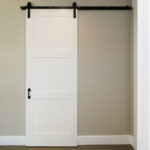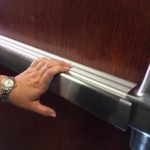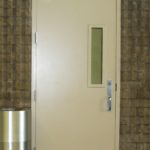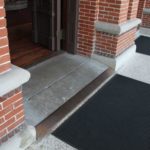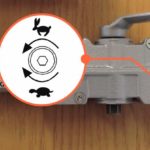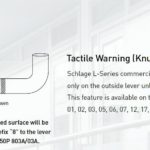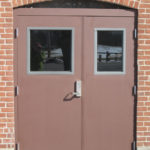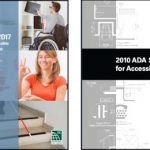2L – Sliding Doors
Most doors within a means of egress are required to be side-hinged or pivoted swinging doors, but there are specific exceptions in the model codes which define where sliding doors are allowed. Many of the accessibility requirements that apply to swinging doors also apply to sliding doors, although some of the requirements are slightly different for sliding doors vs. swinging doors. For example, the maneuvering clearance required for a sliding door is different from that required for a swinging door.

